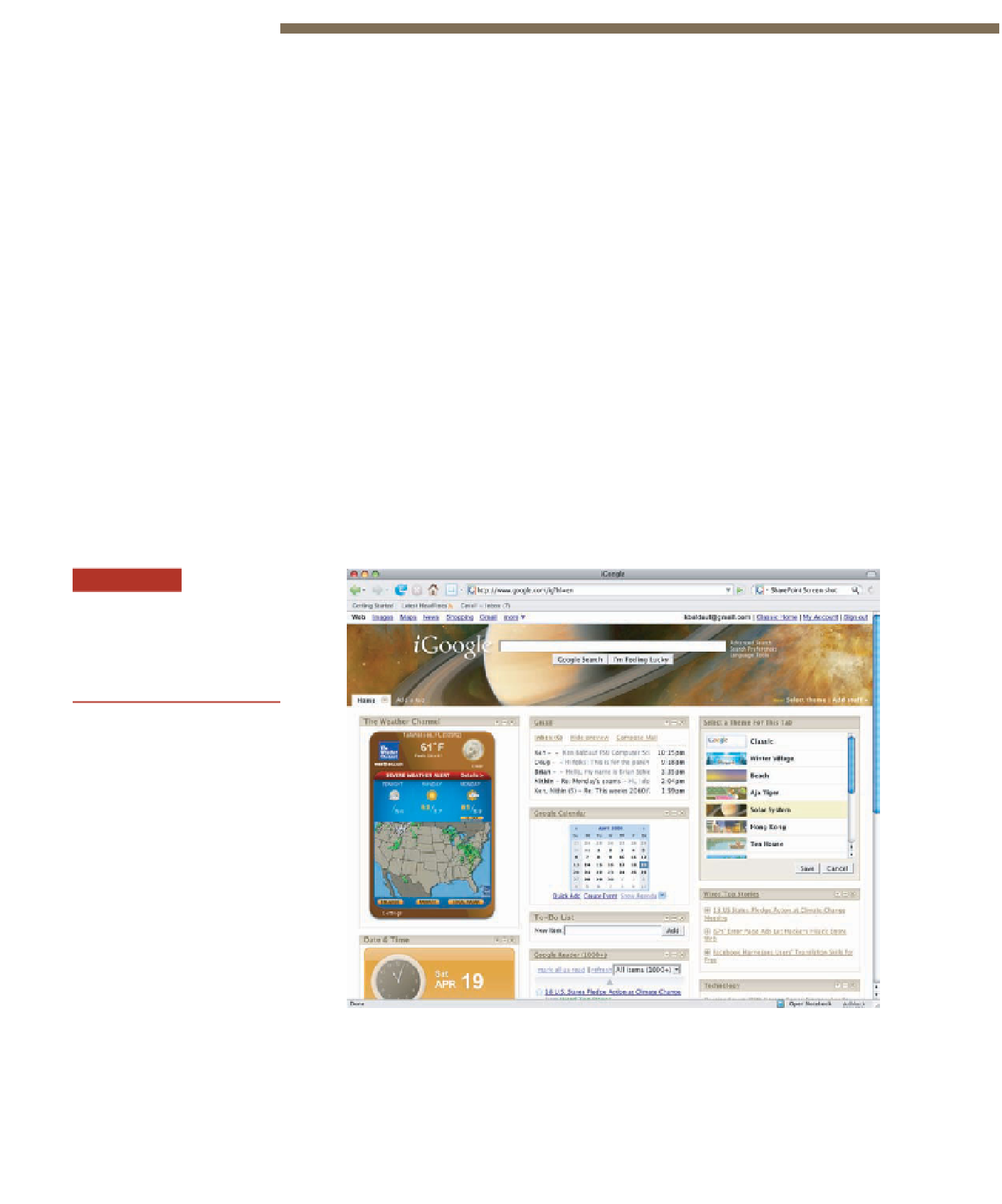Information Technology Reference
In-Depth Information
The World
Wide Web was developed by Tim Berners-Lee at CERN, the European
Organization for Nuclear Research in Geneva, Switzerland. He originally conceived of
it as an internal document-management system. From this modest beginning, the
World
Wide Web
(the Web, WWW, or W3) has grown to a collection of tens of millions of server
computers that work together as one in an Internet service using hyperlink technology to
provide information to billions of users. These computers, called
Web servers
, are scattered
all over the world and contain every imaginable type of data. Web users use
hyperlinks
,
highlighted text or graphics in a Web document, that, when clicked, open a new Web page
or section of the same page containing related content. Thanks to the high-speed Internet
circuits connecting them and hyperlink technology, users can jump between Web pages and
servers effortlessly—creating the illusion of using one big computer. Because of the vast
amount of information available on the Web and the wide variety of media, the Web has
become the most popular means of information access in the world today.
In short, the Web is a hyperlink-based system that uses the client/server model. It orga-
nizes Internet resources throughout the world into a series of linked files, called pages,
accessed and viewed using Web client software called a
Web browser
. Internet Explorer,
Firefox, and Safari are three popular Web browsers. See Figure 7.5. A collection of pages on
one particular topic, accessed under one Web domain, is called a Web site. The Web was
originally designed to support formatted text and pictures on a page. It has evolved to support
many more types of information and communication including user interactivity, animation,
and video. Web
plug-ins
help provide additional features to standard Web sites. Adobe Flash
and Real Player are examples of Web plug-ins.
World Wide Web
A collection of tens of millions of
server computers that work togeth-
er as one in an Internet service using
hyperlink technology to provide
information to billions of users.
hyperlink
Highlighted text or graphics in a Web
document that, when clicked,
opens a new Web page or section of
the same page containing related
content.
Web browser
Web client software such as Internet
Explorer, Firefox, and Safari used to
view Web pages.
Figure 7.5
Mozilla Firefox
Web browsers such as Firefox let
you access Internet resources
throughout the world using a series
of linked Web pages.
A
Web portal
is an entry point or doorway to the Internet. Web portals include AOL,
MSN, Google, Yahoo!, and others. For example, some people use Yahoo.com as their Web
portal, which means they have set Yahoo! as the starting point when they open their browsers.
When they enter the Internet, the Yahoo! Web site appears. Users can often customize Web
portals and choose from a variety of widgets—small useful applications and services—to add

